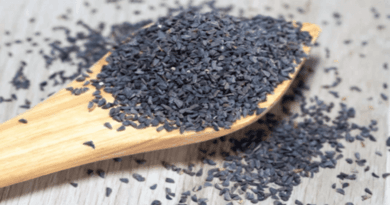The Ritual Uses of Aquilaria agallocha
A Sacred Tree with Spiritual Significance
Aquilaria agallocha, also called agarwood or oud, is a tree native to Southeast Asia. Known for its aromatic resin, it has been valued for use in perfumes, incense, and medicine. But beyond its commercial worth, Aquilaria agallocha holds deep spiritual significance. For centuries, various cultures have incorporated this sacred tree into their rituals. This article explores the spiritual role of Aquilaria agallocha in ceremonies.
The Sacred Resin: Agarwood and Its Spiritual Significance

Agarwood, the resin from Aquilaria agallocha, holds more than just fragrance. It plays an essential role in spiritual rituals, purifying both body and mind. When infected by a specific fungus, the tree produces a dark, aromatic resin. People value this resin for its cleansing qualities.
The Transformation of Agarwood
Agarwood forms when the tree encounters the fungus Fusarium or Phomopsis. This infection triggers resin production, which coats the heartwood. As the resin accumulates, it develops a complex aroma, highly valued in spiritual contexts. The scent, when burned, is thought to have a divine essence that fosters spiritual connection.
Spiritual Use Across Cultures
Agarwood is integral in religious rituals worldwide. From Southeast Asia to the Middle East, people burn agarwood to create sacred spaces for prayer, meditation, and healing. The incense purifies both the surroundings and the individual, allowing spiritual practices to unfold in a focused manner. The rising smoke is believed to carry prayers and offerings to the heavens.
Aquilaria agallocha in Hinduism: A Symbol of Purity and Devotion
In Hinduism, Aquilaria agallocha plays a crucial role in temple rituals and personal prayer. Burning agarwood incense during worship purifies both the devotee and the environment. The fragrance clears negative energy and opens the path to divine blessings. Agarwood’s rich aroma symbolizes spiritual purity and devotion.
Enhancing Meditation and Prayer
Hindu rituals often include burning agarwood to enhance meditation. The calming fragrance helps practitioners focus and connect with their spirituality. Whether in a temple or during personal prayer, the scent guides the experience, creating a space for devotion. The significance of agarwood in Hinduism lies not just in its fragrance but in its ability to elevate the spirit.
Aquilaria agallocha in Buddhism: Enhancing Spiritual Practice
Buddhism also acknowledges the importance of Aquilaria agallocha. In Buddhist temples, burning agarwood enhances meditation and serves as an offering to the Buddha. The resin’s fragrance symbolizes the purity of the Dharma, the path to enlightenment. The act of burning incense represents both an offering and a purification, fostering mindfulness.
Aiding in Meditation and Mindfulness
Agarwood supports meditation by anchoring the practitioner’s attention. The scent calms the senses, clearing the mind for deeper reflection. For Buddhists, burning agarwood incense during meditation symbolizes offering to the Buddha, strengthening the connection to the spiritual path.
Shamanic Rituals: A Gateway to the Spirit World
In Southeast Asia and the Pacific Islands, shamans use Aquilaria agallocha as a powerful tool for spiritual journeys. They burn agarwood to communicate with spirits, heal the sick, and protect the community. The resin’s fragrance is believed to bridge the gap between the physical and spiritual worlds.
Connecting with the Spiritual Realm
Shamans believe agarwood smoke creates an ethereal link to the spirit world. The fragrance guides spirits and facilitates communication with the unseen. During healing rituals, the incense cleanses the energy of both healer and patient. This connection fosters emotional, mental, and physical healing, aligning the ritual with spiritual forces.
Aquilaria agallocha in Traditional Medicine

Beyond rituals, Aquilaria agallocha has long been valued in traditional medicine. People use its resin for a range of therapeutic benefits, including stress relief, pain alleviation, and improved digestion. Cultures across Asia and the Middle East use agarwood in oils, extracts, and teas to treat various ailments.
Therapeutic Benefits in Healing Practices
Agarwood’s medicinal properties extend beyond its spiritual uses. In traditional medicine, it helps with respiratory issues, digestive disorders, and anxiety. Its calming effect makes it a go-to remedy for stress relief. People use the resin in oils or herbal remedies, where it promotes both physical and emotional healing. This dual-purpose makes Aquilaria agallocha an essential element of holistic wellness.
The Modern Revival of Ritual Uses
Recently, interest in the ritual uses of Aquilaria agallocha has grown. As modern spirituality embraces ancient practices, people rediscover the tree’s spiritual resonance. Many are drawn to its role in meditation, prayer, and healing, seeking to connect with nature through sacred rituals.
Sustainability and Conservation Efforts
With rising demand, sustainability is a major concern. Overharvesting has led to a decline in wild Aquilaria trees, prompting efforts for sustainable cultivation. Conservation initiatives focus on growing Aquilaria agallocha in controlled environments to preserve the tree for future generations. Sustainable harvesting practices are essential for maintaining the tree’s role in global spiritual rituals.
Aquilaria agallocha’s Enduring Role in Spiritual Practices
Aquilaria agallocha continues to symbolize purity, devotion, and connection to the divine in various spiritual traditions. Its resin plays a central role in rituals that purify, heal, and deepen spiritual experiences. Whether in Hinduism, Buddhism, or shamanic practices, Aquilaria agallocha enriches spiritual lives worldwide.
As awareness of environmental sustainability grows, efforts to conserve and cultivate Aquilaria agallocha ensure its sacred uses will endure. The tree’s spiritual significance reminds us of the deep connections between nature, healing, and the sacred rituals that unite us.
References
- Choudhury, M. D., & Chakravarty, M. (2016). The Cultural and Medicinal Importance of Agarwood. Journal of Medicinal Plant Studies, 4(1), 89-94.
- Goh, D. T., & Lee, C. S. (2019). Rituals and Practices Involving Agarwood in Southeast Asia. Asian Ethnology, 78(2), 289-305.
- Jansen, S., & Mueller, A. (2017). Agarwood in Traditional Medicine and Ritual Use. In Medicinal Plants of Southeast Asia. Springer, 22(6), 112-124.




